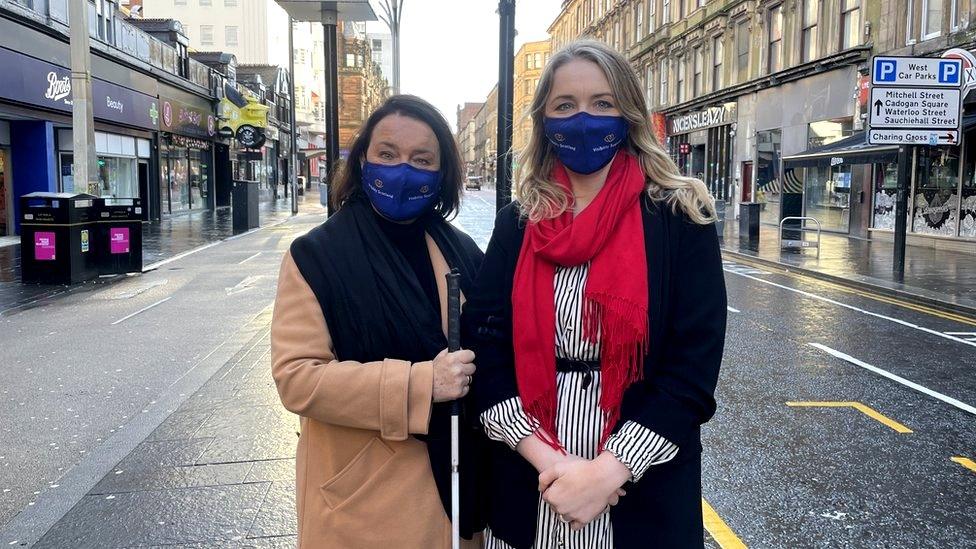New street layouts still unsafe, say blind people
- Published
New street layouts still unsafe say blind people
New street layouts aimed at encouraging walking and cycling are continuing to make life dangerous for visually impaired people, it has been claimed.
More streets in Scotland's biggest cities are being transformed to give priority to active travel.
However, visually impaired people have told the BBC the concerns they warned about in the early designs are still cropping up in new schemes.
They are concerned it is not safe to navigate some of the new streets.
A major issue is that some major roads now require pedestrians to cross cycle lanes to get to bus stops and crossings.
Other complaints include dips in pavements being very small compared to usual kerb sizes. This means that guide dogs - who are trained to find kerbs - will struggle to differentiate between a footpath, cycle lane and road.
A year ago, BBC Scotland reported on concerns being raised about a new design on Sauchiehall Street in Glasgow - but the layout currently remains the same.
Both Glasgow and Edinburgh city councils have committed to spending millions in the coming years on transforming their streetscapes.
They told BBC Scotland that work will be done to improve some of the designs amid intense criticism from disability charities.
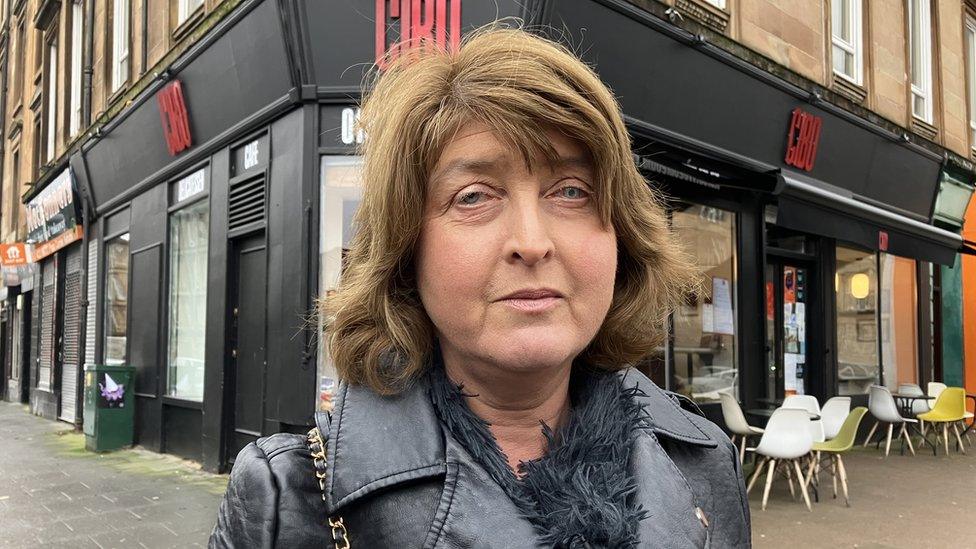
Colette Walker, who is visually impaired and a guide dog owner, said safety was her main concern
Colette Walker, who is visually impaired and a guide dog owner, said safety was the huge issue.
She regularly uses Victoria Road in Glasgow's Southside, which charities have identified as another problem area in the city.
Colette said there are two zebra crossings which are staggered, rather than directly opposite one another.
She said these controlled crossings were difficult for blind people because the tactile paving, used by white cane users, does not run consistently between each staggered crossing.
Colette said her guide dog would bring her "directly over to a kerb" in front of a main road.
"So I would go over an active cycle lane, which I wouldn't even know was an active cycle lane, and my guide dog certainly doesn't," Colette said.
"It's very confusing for me as a visually impaired person, but it's also very confusing for the guide dog as well, because I can't tell her to do her job properly."
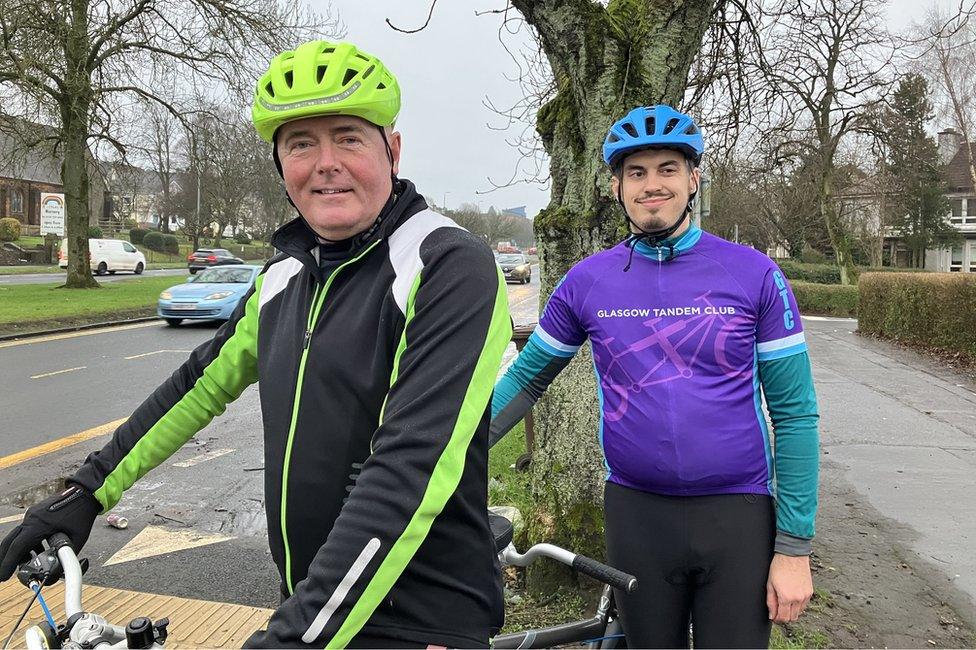
Matthew Clark (rear)has experienced problems as part of Glasgow's tandem cycle club
Matthew Clark, who is visually impaired but also part of Glasgow's tandem cycle club, said it was "important" people understood that the disabled community were not against active travel.
He said they wanted to take part but risked being pushed off the streets by poor design.
Matthew said he would love to cycle more but many of the friends who could "pilot" his tandem were afraid of the poor cycle infrastructure themselves.
A spokesperson for Glasgow City Council said it had followed national guidelines when designing the Victoria Road scheme.
However it said "some changes will soon be made" to the Sauchiehall Street design, and that the council is "currently engaging with members of the disabled community" via an "accessible and inclusive design forum".
They added: "However, feedback/recommendations cannot always be accommodated for various reasons and these decisions have been articulated back to all relevant people/organisations."
There are now concerns that similar designs are being repeated in Scotland's capital city, with Leith Walk in Edinburgh being described as a "no-go zone" by some campaigners.
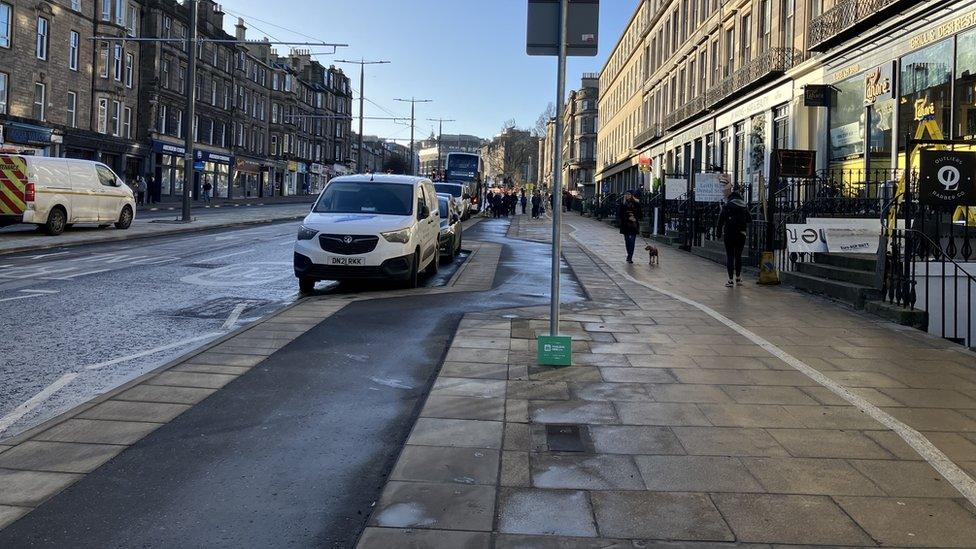
The Leith Walk cycle path has been criticised for being "indistinguishable" from the footpath for visually impaired people
On the street, the pedestrian footpath is directly beside the cycle way - but the difference in height between the two paths is "indistinguishable".
This means that guide dogs and white cane users would struggle to tell the difference between a pedestrian walkway and a cycle path.
Marie O'Donnell, who is a rehabilitation officer for Sight Scotland as well as a guide dog owner, said trying to navigate the street was "terrifying".
"I have a guide dog, Coco, with me, and we wanted to see if Coco would be able to find the start of the cycle path to cross over," she said.
"Because it was flush, between the cycle path and the walkway, she couldn't find it, and as a result she walked into an oncoming cyclist."
Marie, who helps train other visually impaired people to travel independently, said her instinct would be to tell them to "avoid it at all costs".
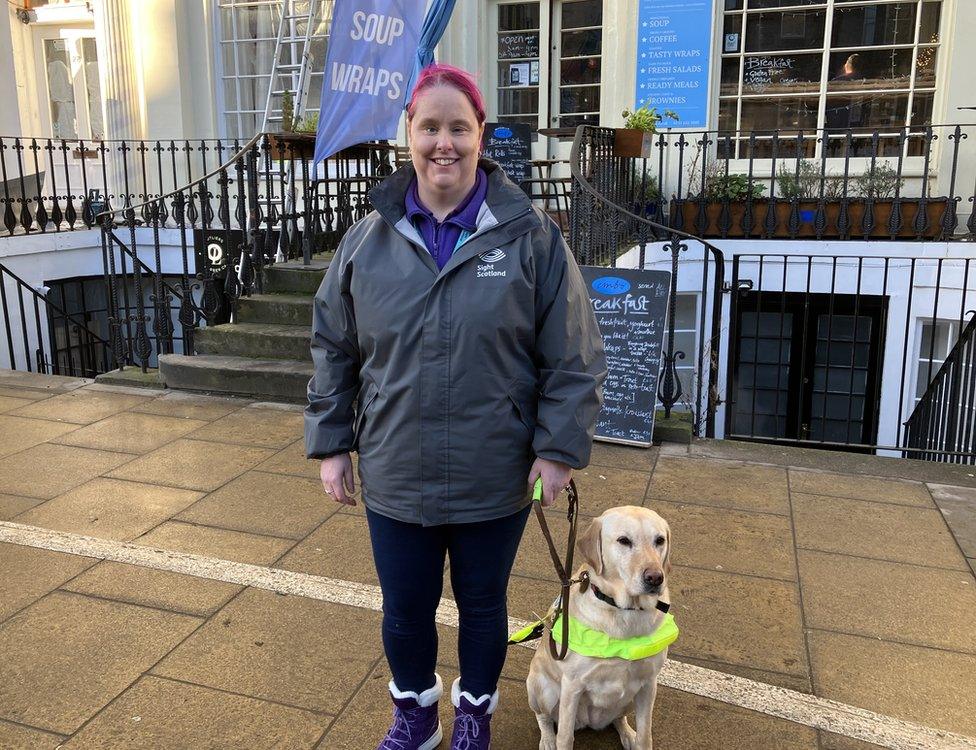
Marie O'Donnell, of Sight Scotland, said trying to navigate the major street was "terrifying"
"However, life doesn't work like that," she said.
"People have to get from A to B or where they want to go, and why shouldn't they?"
Craig Spalding, who is chief executive of Sight Scotland, said it appeared that some councils were choosing "style over safety".
"Unfortunately there's not much consultation that's taken place," he told BBC Scotland.
"That's one of the things we advocate for, that early on in the planning process the voices of people with lived experience who have to navigate these streetscapes need to be listened to and heard."

Edinburgh City Council's transport convener Scott Arthur said he "doesn't really know anybody in Edinburgh who's happy with the design
Edinburgh City Council's transport convener Scott Arthur told BBC Scotland he was "embarrassed" by the criticisms the council received from the disabled community in Edinburgh.
Councillor Arthur said: "I think their criticism was that quite often, some of our active travel designs were making people feel isolated and marginalised, so as Edinburgh's new transport convener I'm absolutely trying to address that."
He admitted that he "doesn't really know anybody in Edinburgh who's happy with the design that we see unfolding just now", adding that the work on Leith Walk was still "incomplete".
Mr Arthur added: "Going forward, we will make good these defects and there will be a demarcation between the footpath and the cycle way. But if there's issues, once the project is completed, we will absolutely address them."
- Published19 February 2022
